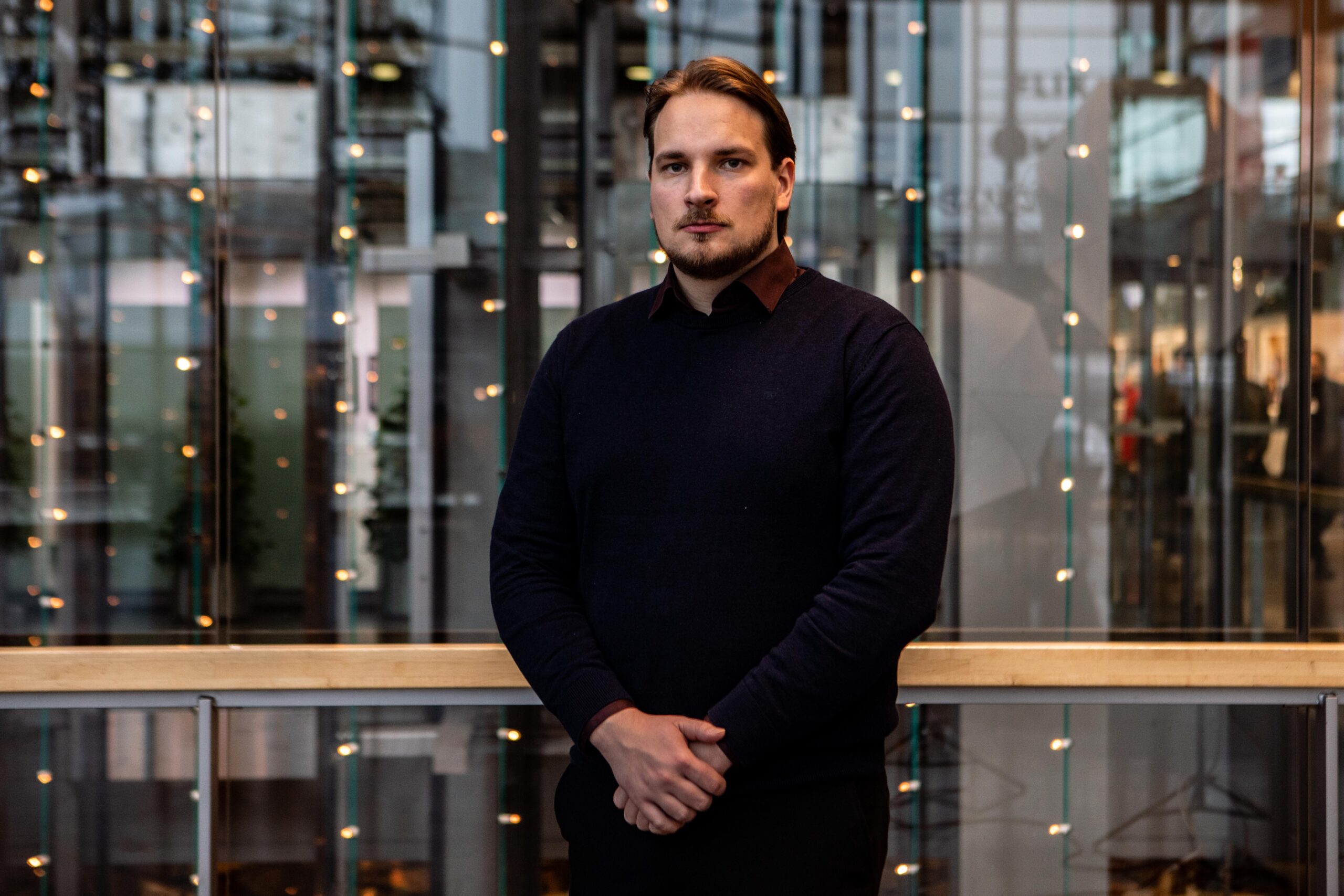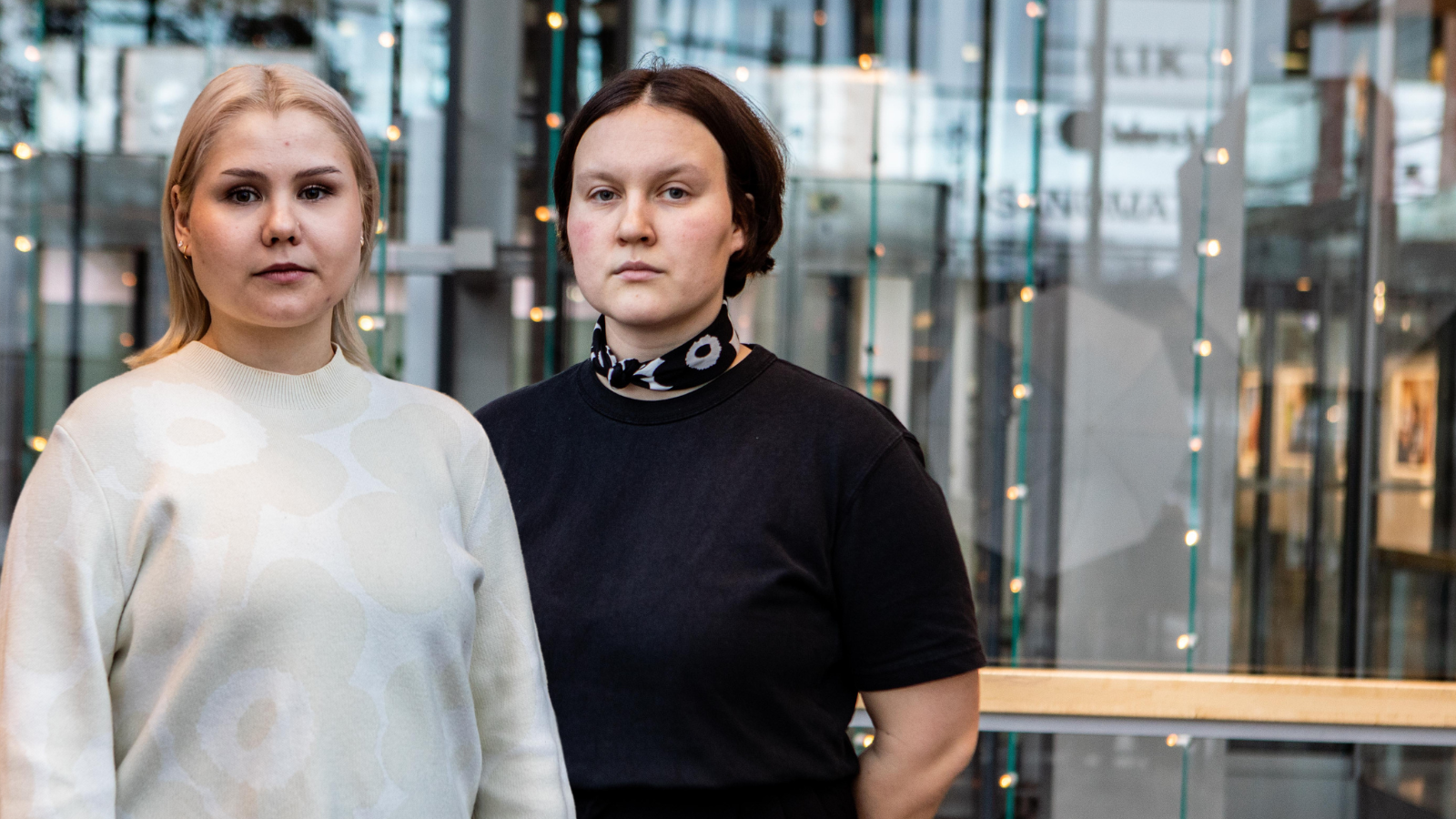Financial worries, too many courses, disappointing exam results, forgetfulness, no progress on the thesis. The pressure to do well at university and at work causes sleepless nights. The public debate is getting increasingly concerned about young people burning out in their studies and at work. Here, the Project Manager of Mielenterveyspooli Alviina Alametsä and SYL Board Member Ada Saarinen discuss the link between young people’s mental health challenges, burning out at work and intergenerational equity on a larger scale.
Higher education as preparation for life?
Studying at a higher education institution is an important time in a person’s life. As a person studies, they also grow and build a vision for their future, their career and what it is to be an adult. However, for more and more students, mental health problems and exhaustion cast a shadow over their study path. How can young people face the challenges of working life if they are already burnt out during their studies?
Students’ mental health problems have been on the rise in the 21st century. Over one third of students suffer mental health symptoms at least weekly. Only 66 per cent of students feel that their mental health is good or very good. The problems are often related to feelings of stress and inadequacy. More and more students feel that their workload is too heavy, and they worry about both their studies and their future career prospects.
Research has shown that a chronically low income is an increasingly important factor in explaining why students are burning out. The income of students has become unequal. Those who are not doing so well suffer long-term stress, which can lead to other issues. A low level of income can also lead to some students working during all their holidays, and not giving themselves any time to rest and recover.
Mental health issues should be addressed at an early stage so that they are not prolonged or reduce the ability to study. The universities, the FSHS and the public health care system should make sure that the required support services are available to students and that the division of labour between different parties is clear. At the moment, it can take months to get help, and students do not always know where to turn for help.
The access to services is not the only challenge in promoting mental health. The attitudes of individuals and communities can have a large impact on whether or not a student seeks help in time. Our performance-centred culture, which even idealises stress and being busy, can make it more difficult for people to seek help and can make them deny their feelings of exhaustion.
How and why are young employees burnt out?
If a young person is exhausted and feels burnt out while they are still studying, it is easy to guess that similar problems may continue when they move into the world of work. In Sweden, there is already more awareness than in Finland of the problematic “trend” of people as young as their twenties pushing themselves to a burn out.
But what is it that causes young people to burn out at work? One possible cause is the transformation of working life. Many workplaces demand more and more independence, which is particularly tough on younger employees. The staff mobility is also greater in many places, which can make people feel replaceable. This can cause additional stress.
This conclusion is also supported by Charlotta Niemistö’s study about Generation Y at work[1]. She found that many of those working as experts do not record all their overtime because they do not want to seem weak. They may also hide how much they are working from their friends and family. The study also shows that it is difficult for career-oriented experts to set boundaries between work and leisure time.
The increasing popularity of smart devices is probably also partly to blame for the difficulties in setting boundaries. A feeling that one has to be reachable at all times can make it difficult to relax even outside of work. When work can be done anytime and anywhere, many can get the feeling that e.g. reading work-related material or replying to a work email does not count as actual working time.
At the same time, the idea that a good employee is happy, extroverted and very motivated is on the rise, particularly in expert positions. Many places of work emphasise a strong community spirit. This makes it more difficult to discuss both one’s own and the community’s problems. At a workplace where everyone seems happy it can be challenging to talk about personal problems relating to coping and mental health.
Many are particularly afraid to seek help with mental health issues as they worry that it would lead to stigmatisation and other consequences. There is a fear that seeking treatment, receiving a diagnosis or even simply admitting to having these problems can make one’s position in the work community and future employment prospects more difficult.
And when one decides to seek help it can be difficult to get any in the current system. Getting help can be particularly complicated and take several months for someone who does not have access to or does not want to use occupational health services. This makes the problems even worse.
Why can Finland simply not afford to let young people burn out?
We have all seen a population pyramid at some point and heard concerning estimates of the worsening Finnish dependency ratio. The constant demographical changes are putting a lot of demands on both the state expenditure and the increasing costs of the pensions system. The younger generations are expected to pay for all this through e.g. historically high pension contributions and a constantly increasing retirement age.
We should not, however, only look at the official retirement age, but also consider how careers can be extended throughout by solving issues relating to wellbeing. We should reflect on how much we can reduce the use of resources and human suffering if we can truly look after people’s wellbeing at work and increase access to preventative services.
Nearly half of disability pensions are caused by mental health issues. More than one in four people of working age suffer from symptoms related to burn out at some point in their lives, and two or three per cent suffer from these symptoms constantly. According to the European Agency for Safety and Health at Work, up to half of the lost working days are a result of work-related stress.
Mental health issues cost society approximately six billion euros per year, which equates to 3,500 euros per employee every year. If the number of people who start claiming a disability pension could be reduced by 10–15 per cent, it would lead to a 0.3–0.5 per cent increase in the gross domestic product.
The younger generations cannot save the Finnish welfare state if they do not receive the support they need. We have to find solutions to these mental health problems before it is too late. Finland simply cannot afford to lose a single young person to burn out.
What should we do?
We as a society have to invest even more in the treatment and prevention of burn out and mental health problems. That is why Finland needs a national mental health programme which spans several government terms, and which comprehensively defines ways to improve mental health in our country.
In the short term, we need more investment in services that both support mental health and solve mental health problems. For higher education institutions, this means developing student support services, such as study guidance and the services of study psychologists. The Ministry of Education should give a recommendation for e.g. the time limits for accessing the services of a study psychologist.
The cooperation between the higher education institutions, the FSHS and public services should be improved. The upcoming extension of the FSHS to also cover students at universities of applied sciences will provide a great basis for this. We have to make sure that students know where to turn with a specific issue, that they do not get sent from place to place, and that they can get the services they need.
These services should also be accessible. During the next government term, we need to find a way to make sure that all students can afford e.g. the rehabilitation psychotherapy that is subsidised by Kela. We also have to develop the option for shorter periods of therapy, e.g. through the kind of model for a short-term therapy guarantee that has been proposed by Mielenterveyspooli.
We can also all do our part to make sure our community does more to support people’s mental wellbeing and ability to cope. Different kinds of mentoring and peer support arrangements help people visualise and improve their own situation and their image of themselves as a student and an employee. We should also make student communities more supportive and compassionate. On the Students’ Mental Health Day, SYL published a blog post which delves deeper into how compassion can build wellbeing.
By investing in mental health and the ability to cope we will have happier people and a more sustainable future!
Alviina Alametsä, Project Manager, Mielenterveyspooli
Ada Saarinen, Board Member, SYL
[1] Niemistö Charlotta, Karjalainen Mira and Hearn Jeff (2017): “Pakko painaa pitkää päivää”: Työn ja muun elämän väliset hämärtyvät rajat tietotyössä. In Työaikakirja. Mika Helander, Ilkka Levä and Sanna Saksela-Bergholm (eds.) Helsinki: Into Kustannus. 147–170.




